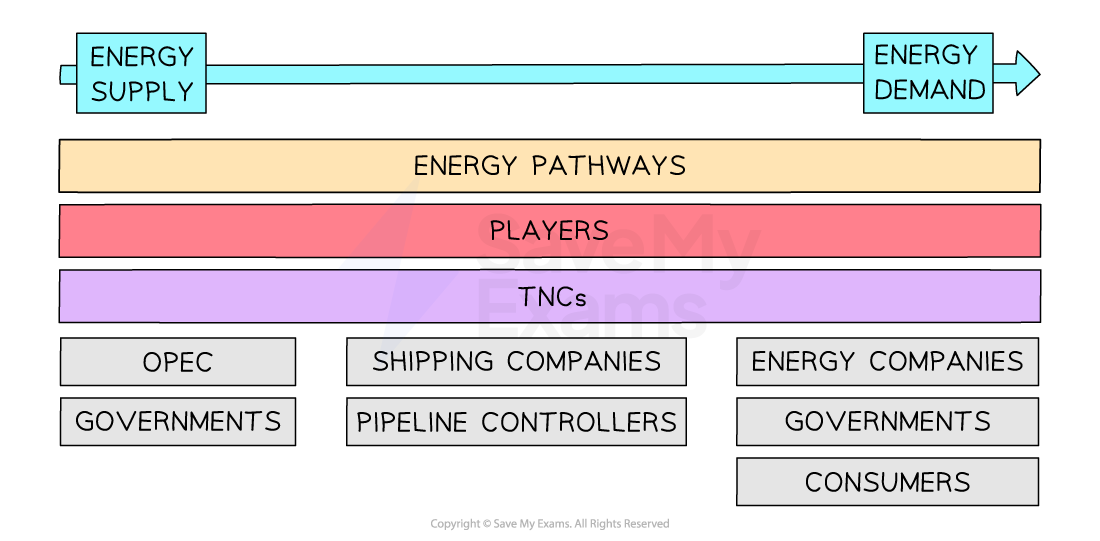Consumption of Energy & Energy Mix
Energy Security
- Energy security is the uninterrupted availability of energy sources at affordable prices

Aspects of Energy Supply in Achieving Energy Security
- Energy secure countries are those that will be able to meet all or most of their energy demands from within their country

Global Energy Security Index
Energy Consumption
- Energy is essential to the functioning of a country especially for the economy and the well-being of people

Energy Use
- The consumption of energy (demand) is increasing as a result of:
- Global population growth
- Development and rising standard of living
- The essential nature of energy to our everyday life
- Energy consumption is usually expressed in per capita terms using one of the following measures:
- Kilograms of oil equivalent per year (kgoe/yr)
- Gigajoules per year (GJ/yr) or exajoules per year (EJ/yr)
- Megawatt hours per year (MWh/yr)

World Energy Consumption
- Measuring how efficiently energy is being used in a country is important too
- Energy intensity is a measure of how efficiently a country is using its energy

Global Energy Intensity
Energy Mix
- The term energy mix is used to describe the combination of different energy sources that are used to meet a country’s total energy demand

Comparison of Three Country’s Energy Mix
- One vital part is the mix of primary energy sources that are used to generate electricity which include:
- Non-renewable fossil fuels such as coal, oil and natural gas
- Renewable energy such as wind, geothermal, hydroelectricity and solar
- Recyclable fuels such as nuclear energy, biomass and general waste
- Countries have their own individual energy mix, for example:
- Developing countries usually use natural resources such as firewood for cooking
- Emerging countries will see a rise of oil use as transport and car ownership increases
- As countries develop they tend to start using more gas and nuclear power as technology advances
- It is important for countries to ensure a good balance between domestic energy sources and imported energy sources
- Energy security increases as dependence on imported energy sources decreases
- A country that depends massively on imported energy are at risk from sudden threats such as:
- Artificial and abrupt changes in energy prices
- Energy supplies being cut off by civil unrest or military campaigns
Worked example
Explain why the level of economic development affects the energy mix of countries.
[6 marks]
-
This is a levelled answer so your answer will be marked against level descriptors
- You will need to include at least two different reasons that are well developed
Possible ideas to include in your answer:
- The energy mix for developing countries is mostly made up of biomass and waste (wood, dung) which is cheap and often free
- Developing countries tend to use natural resources such as firewood directly for cooking
- Transport and car ownership in emerging countries will grow rapidly so oil use will rise.
- As technology develops, there tends to be a shift towards gas and eventually industrialising countries develop nuclear power
- Some emerging countries may start to increase their use of renewables whilst others may not as economic development is more important
- In developed countries oil remains high as it is vital for transport but the use of coal declines due to pollution concerns and is replaced with cheaper gas
- Some developed countries have access to advanced technology so nuclear power is an option
- Many countries will see an increase in renewable energy sources due to concerns over the environment and sustainability



